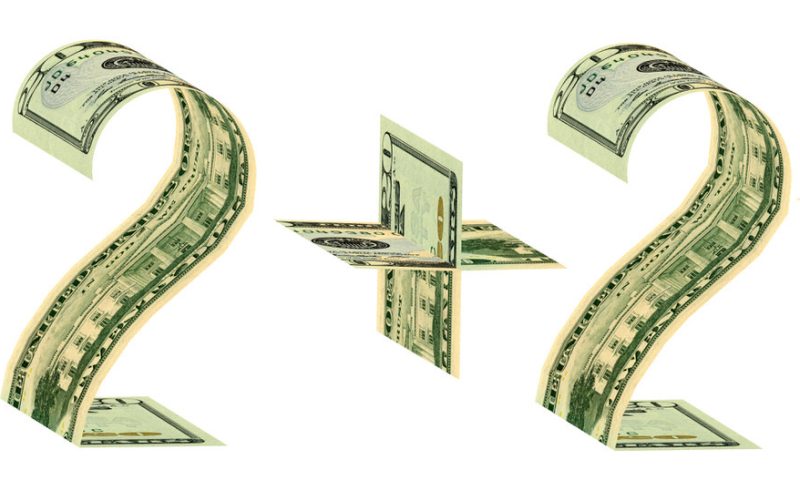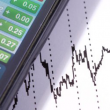by Hubert Marleau, Market Economist, Palos Management
Wars are easy to start, but difficult to end. Fortunately, the more brutal and intractable they become, the quicker and harder diplomacy tries to halt or stop their expansion. Given the fickle nature of international media, and the short concentration span of the general population, protracted conflicts tend over time to lose the world’s attention.
In this regard, I have decided to step away from Russia's war, and return to something that I know a bit about like monetary policy. The point is that the Fed matters far more than wars. So it behoves us to pay attention to the FOMC, and assess how their decisions will play out.
The stock market has recovered nicely from Monday’s mini liquidity crisis. Leon Tuey, a world-class technical analyst, with whom I worked at Nesbitt Thomson in the 1970s, in a note written to me, argued that what transpired on Monday was a classic case of capitulation: a selling climax. The market benchmark rose 259 points or 6.2% to 4463, amid a so-called triple-witching week, which often causes exaggerated declines in stock prices.
As a matter of fact, Friday was the biggest triple-witching day on record, with $5.3 trillion in options set to expire. It didn't affect the rally. It marched on with the good news regardless. Equity markets saw their largest inflow in five weeks with the B of A reporting that global equity funds took in $25.4 billion over the latest weekly reporting period.
Positive rumblings around Ukraine-Russia negotiations have created fresh hope for a “Swedish Style” neutral Ukraine as an acceptable resolution. China has vowed to keep battered markets stable, ease regulatory crackdown and boost economic growth. The Fed did what it was supposed to do - lift interest rates gradually with no political pushback.
The Russian state avoided default by making coupon payments on dollar-denominated sovereign bonds. Biden and Xi spoke for an hour and half, Biden having likely provided Xi with a laundry list of escalatory measures that could be imposed in the event China decides to bail out Russia. Given economic conditions at home, I don’t think Xi wants another crisis right now.
Two-Plus-Two
As was widely expected, the Federal Reserve raised its benchmark rate by 25 bps, pencilling in a series of 6 more increases in 2022, taking the Fed funds target to 1.875%, where the neutral rate lies and introducing a QT plan at a coming meeting. Why? The inflation rate is running too high and the economy is operating at full employment. The labour market has fully recovered and employers have millions of open positions to fill. Elevated inflation was the defining characteristic behind this decision.
The Misery Index, which is the addition of the rate of inflation and unemployment, is 11.7. Inflation accounts for 67.5% of this misery. Meanwhile, the Palos Monetary Index, a calculation that takes into account growth objectives, price stability, the employment situation and viability of the balance of payment, stands at -8.2. A negative number indicates that the Fed is behind the curve. It had to change course if it wished to avoid financial instability. This may seem an exogenous explanation, but I put the blame on the White House, which sent out additional stimulus and lengthened the duration of extended unemployment benefits, when neither was needed.
From here on, monetary policy is expected to move gradually step by step, to an even-keel monetary stance by year-end. The monetary authorities are hopeful that they will be able to manage the forthcoming interest rate cycle in a manner that will subdue inflation without raising the odds of recession. Forecasting models based on the shape of the yield curve are still calculating those odds at 25%. Capital Economics has several composite recession tracking models which incorporate a broad range of economic and financial market data, currently putting the odds of a recession within the next year at just 2%.
As a matter of fact, US leading indicators point to slowing growth, but not a recession. The most useful term spread for forecasting recessions is the difference between the yields on 3-months Treasury bills and 10-year notes, according to groundbreaking studies by the FRB of San Francisco. The gap is a healthy 175 bps, the widest since early 2017.
Bloomberg’s Robert Burgess came up with a compelling argument, in which he wrote: “The simple fact is that consumers, whose spending make up two-thirds of the economy, are perhaps in their best shape ever financially.” Indeed, consumers have built-up a staggeringly high cash cushion through the Covid-19 pandemic. Checkable deposits for households rose to $4.2 trillion in February from
$1.2 trillion at the end of 2019. The previous high was $1.4 trillion. What makes this time different from the recent past is overall wealth. According to the Fed, U.S. household wealth has surged to $40.3 trillion at the start of the pandemic to a record $150.3 trillion through the end of 2021. The Barron’s illustrated that this amounts to a whopping 37% increase over seven quarters, almost equal to the previous seven years combined. As impressive as that is, perhaps more encouraging still is that net worth exceeds disposable income by more than 8 times, compared with about 4.5 times during the last inflation shock.
Thus a soft landing, in which inflation is brought down without giving up any of the recent gains in the labour market, is really probable. Why? The number of job openings far exceeds that of unemployed workers and the productivity outlook is positive. Benign outcomes of tightening
cycles are far more common than is generally understood. This may be why the Fed has manifested willingness to take its monetary stance into restrictive territory to quell inflation. While I understand that Powell must look like an inflation fighter to restore price stability, I doubt, however, that the policymakers have the fortitude to persist long enough to bring about a policy rate that would go beyond neutral.
There is an awareness among central bankers that the relationship between macroeconomic slack and inflation does not have the same correlation as it once did, which means that their monetary policy tools may not have the same desired effect as they did in the past. For example, the BOE increased rates 25bpts to 0.75% on Thursday, but also softened its language on the need for more hikes. Moreover ECB President Christine Lagarde said that she was in no hurry to raise rates, while the BOJ decided to keep its short-term rate target at -0.1% and its control of the10-year around 0.0%.
In any case, it may not be a big deal. Fed officials have pencilled in a 2.8% peak target rate for next year. Adjusted for inflation, that benchmark rate would still be lower than the previous peak of 2018, potentially making the Fed’s objective of getting Goldilocks down to the line credible. And on top of that China is poised to get more aggressive about easing, counter-balancing the Fed.
The Fed’s new projections show headline and core PCE at 4.2% in 2022, 2.65% in 2023 and 2.3% in 2024. Growth will be 2.8%, 2.2% and 2.2%, while the unemployment rate will fall to 3.5% this year, and remain there through 2023, before ticking higher to 3.6%. As it currently stands, it appears probable that the Fed will steer the economy to a “two-plus-two” scenario. That is 2% for growth and 2% for inflation. The bond market is in tune with this scenario, believing that the inflation rate will fall to 4.5% in one year from now and to 2.1% in four years.
Economic News
The U.S.Commerce Department reported a muted rise in retail sales. Given that the personal savings rate is already below its pre-pandemic level and spending at the gas stations registered a sharp uptick, real consumption growth is bound to slow down over the coming months. Andrew Lees of Macro Strategy Partnership summarised this outlook concisely in his latest morning note. He wrote: “February retail sales, a nominal figure, grew 0.3% m/m with ex-auto and gasoline
-0.4%. Within the total, there is clearly a change in terms of trade happening. Adjusting for 0.8% February CPI, retail sales are declining. Presumably, the arbitrage between the volumes falling and the prices rising is from monetary growth or velocity of money. The 3-monthly percentage increase in retail sales was just in excess of the percentage increase in money supply, drawing down slightly on the stock of money. Since the end of 2019, the cumulative excess percentage growth of the money supply over retail sales has fallen from 36.8% at the high in April 2020 to
13.2% in December 2020 to 7.1% in December 2022, to 3.1% in February. This suggests that inflation has been backward looking, mainly from the monetary growth in Q2 2020. With monetary growth likely to continue to slow as QE ends and the Fed tightens policy, without an increase in the velocity of money, the retail sales growth is likely to slow further, and with it, inflation.”
Meanwhile, the easing of widespread absenteeism as Covid cases fell back sharply pushed industrial production up 0.5% in February to register an overall gain of 7.4% y/y. Very strong gains were reported in business equipment, also. The Atlanta Fed’s GDPNow model estimate for GDP growth in Q1 was 1.3%, up from 0.1% just a few weeks ago. The NY Fed’s dynamic stochastic general equilibrium (DSGE) model projects an increase in GDP growth from 0.9% in 2022 to 1.2% in 2023, followed by a gradual rise over the forecasting horizon , reaching 1.8% by 2025.
Meanwhile, US producer price inflation cooled in February. The headline YoY PPI print was 10%, a bit below consensus. Ex food and energy, PPI rose just 0.2% MoM, far less than the 0.6% advance economists had forecast. Should the war end faster than expected, food and energy inflation could prove to be overweight also. There are indications that some supply chain strains have begun to ease at a time when the expansion rate of world money supply (WMS) is rapidly receding. It’s currently running at an annual rate of 5.0%, whereas it was above 15% last year. The NY Fed’s Underlying Inflation Gauge (UIG), which captures sustained movements in inflation from information contained in a broad set of price, real economic activity and financial data, measured that inflation actually ran at an annual rate of 4.8% in February, a 0.1% point increase from the previous month, comparatively much lower than the the CPI print of 7.9%.
Conclusion
Given that the probability is high that the US economy will avoid a recession over the next 12 months, strategists at Goldman Sachs wrote in a note to investors that a 10%+ S&P 500 corrections, like we have just had, typically represents good buying opportunities, with a median subsequent 12-month market return of 15%. JPMorgan have also not strayed far from their bullish stance, believing that the bearishness has gone too far. Marco Kolanovic, the number one macro strategist on Wall Street, believes that shares in a hodgepodge of high beta, beaten-down corners of the market, including innovation, tech, biotech, and small-caps are pricing in a severe recession that is unlikely to emerge. However, we are no longer trimming positions in the resource sectors: energy, agriculture and mining.
Last Monday, the S&P 500 was down 13.0% from its latest peak, hitting a “death cross.” That is when the index’s 50-day moving average falls below the 200-day number. It means that stock prices have fallen below their long-term trend, signifying that something bad could be lagging. Fortunately, things are not that bleak when the odds of recession are low. Historically, the S&P
500 tends to post impressive gains following death cross events. For what it’s worth, the BOA’s Bull & Bear Indicator is now very close to flashing a contrarian “buy” signal. There are many worrywarts still out there, but they should listen to the sage comments of Peter Lynch, a premier seasonned investor, who once memorably said: “Far more money has been lost by investors preparing for corrections or trying to anticipate corrections than has been lost in corrections themselves.”
Copyright © Palos Management















